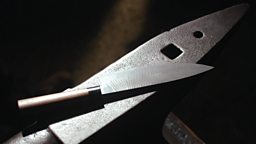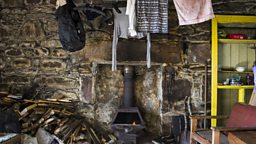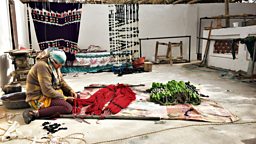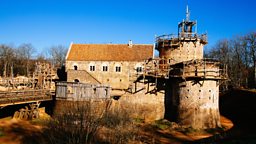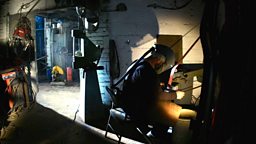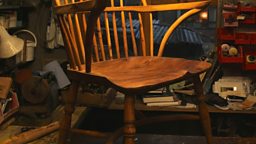How artist blacksmith and bladesmith Owen Bush forges a modern Damascus knife
“Forging soul into steel” — that’s the motto of artist blacksmith and bladesmith Owen Bush. Working out of his forge in Welling, Kent, Owen lives out his passion for hot working of metals.
A nicely made knife is both an object of beauty and a tool. Part of the functionality for me is that it should interact with the person who owns it and they should enjoy it, so it has to be beautiful as well.
His artistically forged, welded and fabricated metalwork encompasses Damascus knives, swords and axes influenced by Saxon bladesmithing from the seventh to the ninth century.
- Sit back and watch:
- On his own website:
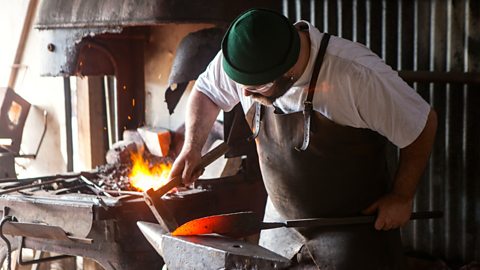
At the forge, blademaster Owen Bush begins his day
The work of a blacksmith involves heating metal to change its shape or join it together.
The process
Owen forges a modern Damascus knife using a pattern-welding technique practised in the Iron Age. This method, which involves combining different types of steel, was invented to give strength to blades.

While the modern steels that Owen combines (manganese and nickel) are strong enough to be used in isolation, when combined they create an attractive pattern on the flat edge of the knife. Owen employs the technique to add beauty to his blades. The layers of steel are sandwiched together to form a billet, resembling a deck of cards, which is hand-forged and manipulated to create the blade itself.
“I like it when the process is visible in some way. That is especially true of pattern-welding. Every little bit of that pattern is part of the process you've used to make the blade. So sometimes it reflects hammer blows or materials that have been twisted.”
Etching is the moment the signature ‘Damascus’ markings become visible, as a solution of acid salts reveals the pattern and as the story of its making.
